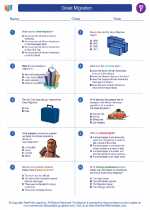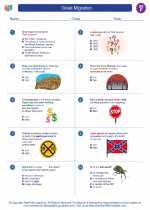Ecosystems
An ecosystem is a community of living organisms (plants, animals, and microorganisms) in conjunction with the nonliving components of their environment (such as air, water, and mineral soil), interacting as a system. These biotic and abiotic components are linked together through nutrient cycles and energy flows.
Components of an Ecosystem
An ecosystem consists of two main components:
- Biotic Components: These are the living organisms in the ecosystem, including plants, animals, and microorganisms.
- Abiotic Components: These are the nonliving factors in the ecosystem, such as soil, water, air, sunlight, and climate.
Types of Ecosystems
Ecosystems can be classified into various types, including:
- Terrestrial Ecosystems: These are land-based ecosystems, such as forests, grasslands, deserts, and tundras.
- Aquatic Ecosystems: These are water-based ecosystems, including freshwater ecosystems (such as lakes and rivers) and marine ecosystems (such as oceans and coral reefs).
- Artificial Ecosystems: These are human-made ecosystems, such as gardens, farms, and urban environments.
Interactions in Ecosystems
In an ecosystem, living organisms interact with each other and with the abiotic components. These interactions include:
- Competition: Organisms compete for resources, such as food, water, and shelter.
- Predation: Predators hunt and consume prey, regulating the population of prey species.
- Symbiosis: Some species have close, long-term interactions with each other, such as mutualism (both benefit), commensalism (one benefits, the other is unaffected), and parasitism (one benefits, the other is harmed).
- Decomposition: Decomposers break down dead organic matter, returning nutrients to the soil.
Importance of Ecosystems
Ecosystems provide numerous benefits, including:
- Regulation of Climate: Ecosystems help regulate the Earth's climate by absorbing carbon dioxide and releasing oxygen.
- Provision of Resources: Ecosystems provide food, water, medicine, and raw materials for human use.
- Biodiversity: Ecosystems support a wide variety of plant and animal species, contributing to the planet's biodiversity.
- Recreation and Aesthetics: Ecosystems offer opportunities for outdoor recreation and provide beautiful natural landscapes.
Study Guide
For studying ecosystems, consider the following key points:
- Define what an ecosystem is and identify its components.
- Describe the different types of ecosystems and their characteristics.
- Explain the interactions that occur within ecosystems, including competition, predation, symbiosis, and decomposition.
- Discuss the importance of ecosystems and the benefits they provide to human societies and the environment.
- Consider real-life examples of ecosystems and the ways in which they support life on Earth.
Use these study guide points to review and understand the concepts of ecosystems, and consider exploring specific examples and case studies to deepen your understanding.
[Ecosystems] Related Worksheets and Study Guides:
.◂Social Studies Worksheets and Study Guides Sixth Grade. Great Migration

 Worksheet/Answer key
Worksheet/Answer key
 Worksheet/Answer key
Worksheet/Answer key
 Worksheet/Answer key
Worksheet/Answer key
